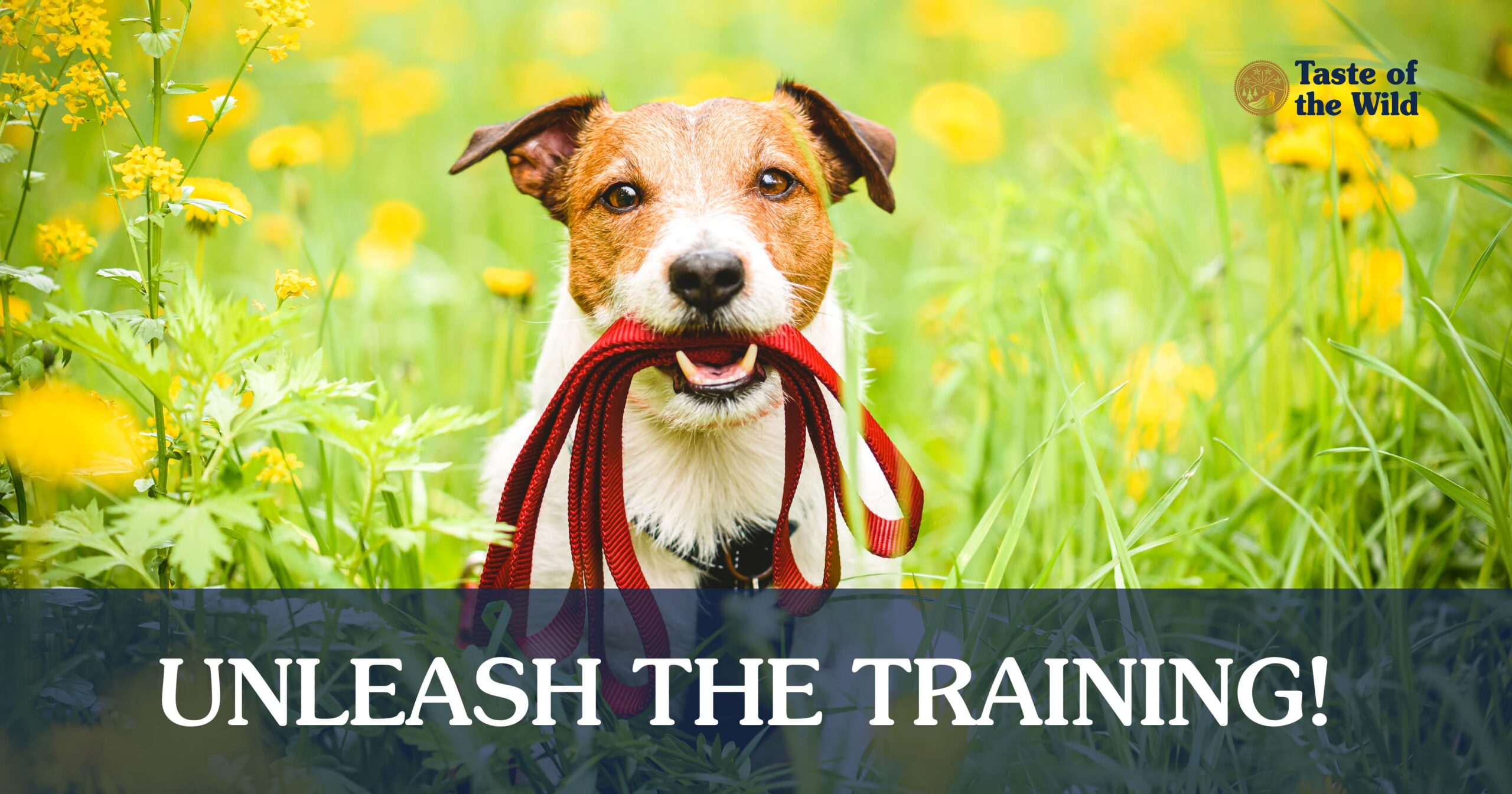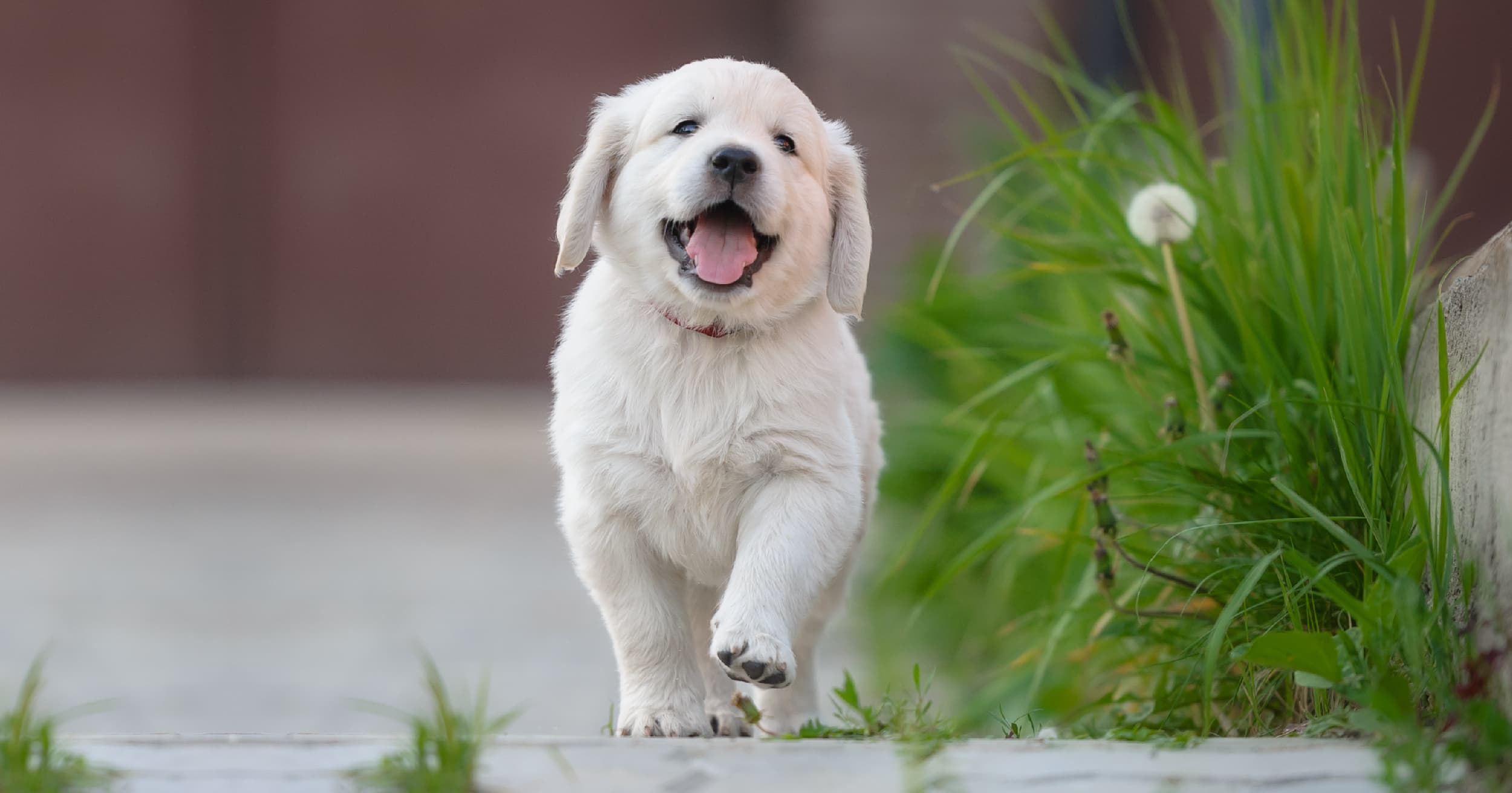How to Train Your Puppy to Walk on a Leash
Thursday, September 22, 2022 | Puppies

You’ve brought your puppy home, which means it’s not too early to start going on walks. Which also means that leash training is essential! It’s an exciting adventure that you’re about to embark on with your new pup.
Like all types of training, getting your puppy to walk nicely on a leash won’t be quite as easy as simply picking up the leash and heading out the door. A bit more work is involved to get your pupper comfortable with his or her leash. But with the right tips and tricks, it can be a breeze!
First, you’ll want to visit your local pet store and find the correct size harness and leash length. A shorter leash is perfect for training a puppy. You can upgrade to a longer one once your pup maintains good leash manners.
To find the right length of leash, take your height and the size of your puppy into account. A taller human with a small pupper will require a longer leash than a human who is a bit shorter in stature. One length does not fit all.
As a starting point, test out a standard 4-foot length and evaluate if there is enough leash between you and your puppy. Less distance between you and your furry friend is perfect for more control while training, but you do want them to be comfortable. If you’re a taller human and you do not feel 4 feet is enough leash, try a 5-footer.
A harness leash is the safest option as the puppy learns not to pull on the leash, because a collar alone can lead to choking. To find the right size, you’ll need to know your puppy’s weight and girth — so grab your grandma’s sewing tape and measure Fido before heading to the pet store.
The harness should not cause your puppy’s neck or shoulders to bunch up and you should be able to comfortably fit two fingers between the material and your puppy’s body.
Now that you’re equipped with the right leash and harness, let’s unpack the training steps.
Step 1: Getting Your Puppy Comfortable with a Leash
Puppies can begin leash training as young as six weeks old. Introduce them to the leash and harness by letting them wear it around the house for short periods of time. During this time, play with your puppy, show them affection and give them treats. You want to establish a good relationship between your puppy and their leash.
If you notice that your puppy looks scared of the leash, it’s OK. Take a step back for a moment. Instead of the leash, try tying a shoelace or small piece of rope to the harness so they can get used to dragging something lighter around the house. Then transition to the leash as they become more comfortable.
Note that puppies under five months old won’t have complete focus or self-control, so it’s best to slowly introduce the leash and harness indoors.
Step 2: Practice Walking
Once your puppy is acclimated to their harness and leash, practice walking around indoors. Space out treats or toys along a route you’d like your puppy to walk. This will help your puppy focus on what’s ahead of them. With the leash in hand, guide them along the route you’ve chosen.
Did they make it along the path? Praise them for a job well done!
With practice, your puppy will improve their walking skills and pace. Try to build a little path each day for them to practice on.
As they become more comfortable walking on a clear path, start removing the line of treats and toys. Transition to rewarding them with a treat when they’ve finished walking their route.
Step 3: Walking in New Environments
It’s now time to introduce your puppy to new environments with more distractions.
Try lining your patio or backyard with toys or treats, like what you did indoors. Practice your walk a little each day until you notice your puppy is just as comfortable walking on their leash outdoors as they are indoors. Reduce the frequency of treats and increase the words of affirmation.
You’re both making great progress!
Now slowly introduce your pup to busier areas. You don’t want to push them too much all at once, though. The next level up from the backyard could include a quiet street or a lightly traveled trail.
As they become more confident in their new environments, change the speed or direction you walk. Try to keep your puppy on one side and have them avoid crossing back and forth. You’ll notice that dog show competitions typically require furry companions to walk on the left side of the owner, but either side works just fine for you.
If your pup starts to weave from one side to the other, get their attention with a treat or toy to teach them to stay on the side you prefer. Once they begin walking on the correct side again, praise them for their efforts.
A little training each day will go a long way. In steps two and three, you’ll know when it’s time to put the training down for the day. Your puppy will go from a happy, playful ball of fur to fighting the leash. That’s your cue!
Patience and consistency are your two secret weapons as you tackle this leash training adventure. Keep both by your side while following the tips above and you’ll have a good leash-mannered puppy in the months ahead.
RELATED POST: 13 Ways to Ensure a Safe Dog Park Experience
The information in this blog has been developed with our veterinarian and is designed to help educate pet parents. If you have questions or concerns about your pet’s health or nutrition, please talk with your veterinarian.





